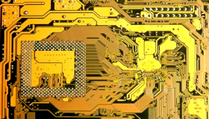 As regulators approve more submissions requiring an ever-broader range of swaps to be traded over Swap Execution Facilities (SEFs), UBS Securities is enabling clients to trade over SEFs without the legal or technical headaches of connecting to them directly. So far UBS is the only major Wall Street firm so far with an active desktop product that does this.
As regulators approve more submissions requiring an ever-broader range of swaps to be traded over Swap Execution Facilities (SEFs), UBS Securities is enabling clients to trade over SEFs without the legal or technical headaches of connecting to them directly. So far UBS is the only major Wall Street firm so far with an active desktop product that does this.
Javelin was the first SEF to receive approval for its broad made-available-to-trade (MAT) application, in mid-January, and since then TrueEX, TW and MarketAxess have received approval. That means the swap contracts they’ve submitted must soon be traded over the 20-odd SEFs that have emerged, either electronically or through their trading desks.
Some SEFs trade either credit-default or interest-rate swap products, but liquidity for each is clearly fragmented across multiple execution venues, and to find the best price or liquidity by connecting to them directly would require meeting burdensome legal and technical requirements. Although most corporate end users are exempt from clearing, those now trading on longstanding trading platforms such as Bloomberg or TradeWeb will have to trade over SEFs. If they decide to connect to the execution platforms directly, they’ll have to review and sign each one’s specific legal documents, and submit themselves to inspections in areas including books and records, personnel histories, audited financials.
UBS’s Neo trading platform allows clients to trade across all the SEFs, whether using algorithms to search broadly for best price or liquidity, or on a specific execution platform. It also places only one screen on the client’s desktop, instead of several.
“Neo avoids market fragmentation and simplifies access to liquidity by using a single platform to connect to multiple venues to price and trade swaps,” said Timothy Lawton, a director at UBS.
For corporates, which tend to trade swaps less frequently, Neo represents an efficient and potentially cost-effective way to access the new SEF swap market. In addition to benefiting from UBS’s existing connectivity and price discounts it receives on certain SEFs, Lawton said, the commission charged for trading over Neo may be negotiated.
“It resonates with people who just don’t do a lot of swap activity and may want an agency to take care of it all, and prefer having only one legal agreement with their agent bank,” said Tod Skarecky, senior vice president at Clarus Financial Technology who has blogged extensively about SEF-market developments.
At least two other competitors, Morgan Stanley and Credit Suisse, have reportedly talked to clients about establishing a similar service. Those firms either didn’t respond queries or said those discussions were in preliminary stages.
UBS may have an advantage over most Wall Street rivals, because it exited trading swaps for its own book in 2010 and the next year launched is Price Improvement Network (PIN), an electronic platform to trade interest-rate and credit-default swaps on an agency basis. Neo is focusing on the interest-rate and credit-default swap products now, and it’s anticipated to eventually provide access to the bulk of UBS’s products and services.